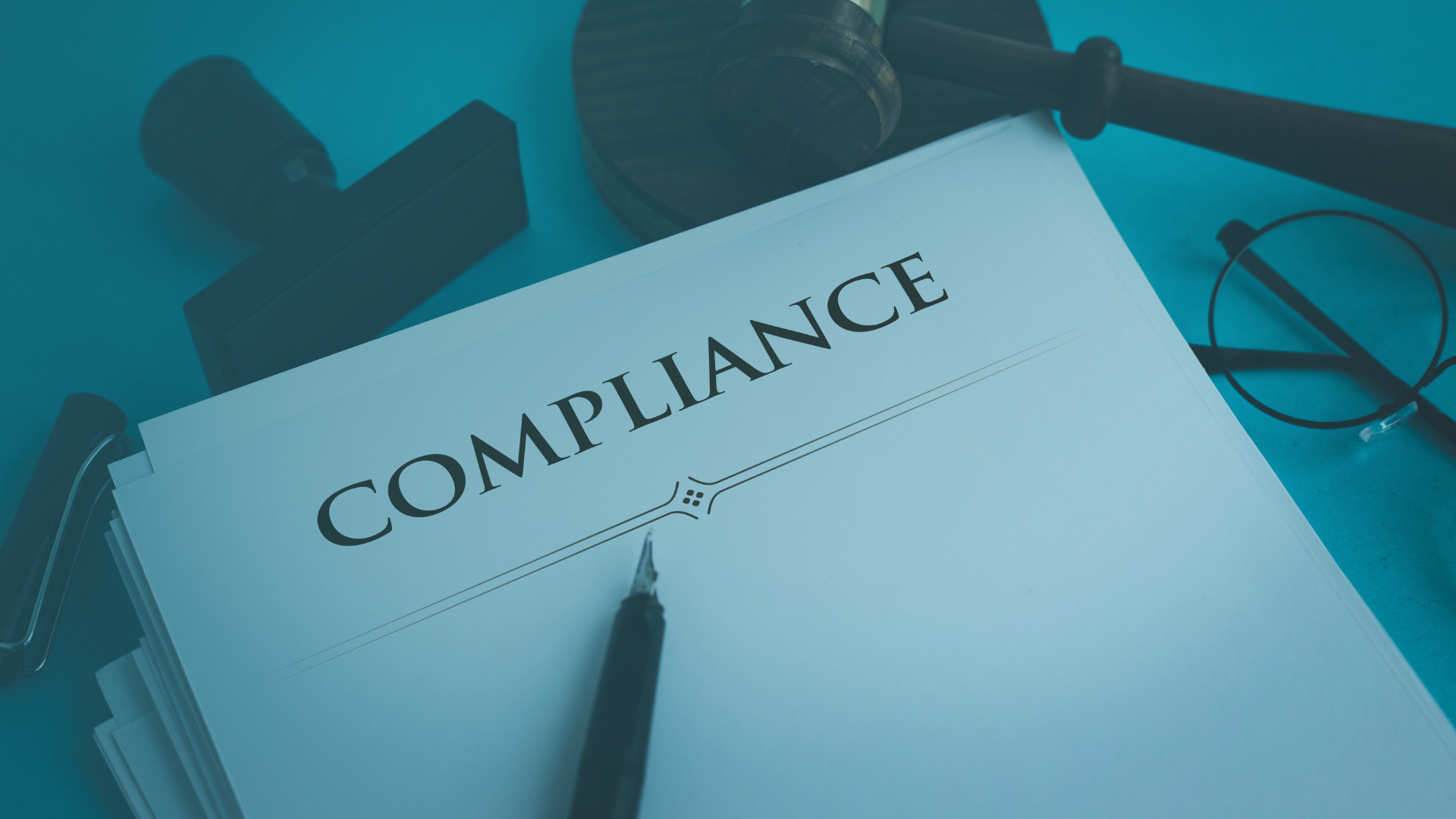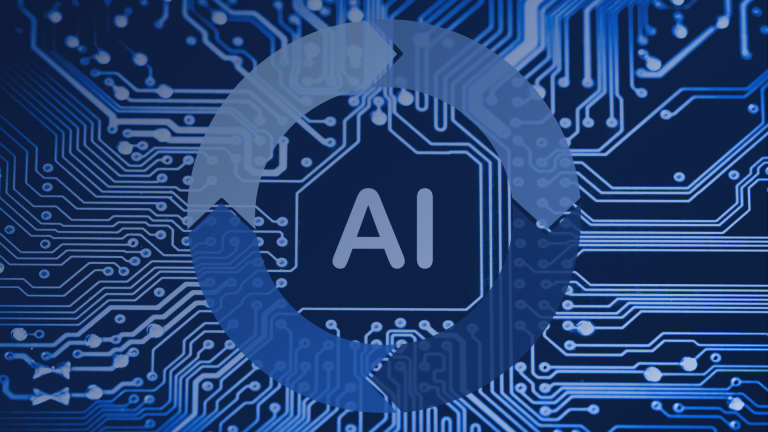Automated Compliance Monitoring & Regulatory Intelligence: A Strategic Implementation Guide
Regulatory compliance creates persistent operational burden across industries. Organizations must track evolving regulations, monitor internal activities for compliance violations, maintain documentation for audits, report to regulators on schedule, and demonstrate adherence to industry standards. The stakes are high: non-compliance can result in significant fines, operational restrictions, reputational damage, or loss of critical licenses and certifications.
Yet compliance management typically relies on manual processes that don’t scale. Compliance teams manually review transactions, communications, or operational data looking for violations. They track regulatory changes by subscribing to newsletters, attending seminars, or periodically checking regulator websites. They maintain compliance documentation in spreadsheets and shared drives. They prepare audit reports by manually compiling evidence from multiple systems.
This manual approach creates multiple problems. It’s time-consuming (compliance staff spend the majority of their time on routine monitoring rather than strategic risk management). It’s incomplete (comprehensive review of all relevant activities is often impossible, so organizations sample or spot-check, potentially missing violations). It’s reactive (issues are discovered after they occur rather than prevented proactively). It’s inconsistent (interpretation of requirements varies among compliance staff, leading to uneven enforcement).
The business cost is measurable. Compliance violations result in fines, remediation costs, and damaged relationships with regulators. Manual monitoring requires substantial staff time that could address higher-value risk management activities. Audit preparation consumes weeks of work compiling documentation. Regulatory changes get implemented slowly because discovery and impact assessment are manual processes.
LLM-powered compliance monitoring systems can address these challenges by continuously monitoring activities and communications for potential violations, tracking regulatory changes across multiple jurisdictions and frameworks, identifying patterns indicating systematic compliance risks, automating routine documentation and reporting, and enabling compliance teams to focus on strategic risk management rather than manual review. But this use case requires extremely careful implementation given regulatory scrutiny, high error costs, and the need for explainability and auditability.
Is This Use Case Right for Your Organization?
Identifying the Right Business Problems
This use case makes strategic sense when your organization faces specific, measurable compliance challenges:
Compliance monitoring consumes disproportionate staff time. If your compliance team spends 60-80% of their time on routine monitoring (reviewing transactions, communications, or operational activities for potential violations) they lack capacity for strategic work like risk assessment, policy development, or compliance training. Calculate the cost: compliance staff time is expensive, and spending it on routine monitoring that could be automated represents significant opportunity cost.
Compliance violations occur despite monitoring efforts. If you’re discovering violations after the fact (through audits, regulatory examinations, or incident investigations) despite having compliance monitoring in place, your current approach has coverage gaps. Each violation carries direct costs (fines, remediation) and indirect costs (regulatory relationships, reputation, operational disruption).
Regulatory change management is slow and reactive. When regulations change, how quickly does your organization identify relevant changes, assess impact, and implement necessary adjustments? If this process takes months and involves substantial manual work tracking regulatory publications, you’re operating with significant regulatory lag. In fast-moving regulatory environments, slow adaptation creates compliance risk.
Audit preparation is extremely time-consuming. If preparing for audits or regulatory examinations requires weeks of staff time compiling evidence, pulling reports from multiple systems, and organizing documentation, automation could dramatically reduce this burden while improving audit outcomes through more comprehensive, organized evidence.
Compliance activities lack consistency. When compliance interpretation and enforcement varies significantly among compliance staff or across business units, you have a quality and risk management problem. Inconsistent compliance creates both gaps (some violations missed) and friction (legitimate activities flagged incorrectly).
You operate in heavily regulated industries. Financial services, healthcare, pharmaceuticals, energy, telecommunications, and other industries face extensive, complex, and frequently changing regulatory requirements. The compliance burden in these industries justifies investment in automation that might not make sense for lightly regulated businesses.
When This Use Case Doesn’t Fit
Be realistic about when this approach won’t deliver value:
- Your regulatory burden is genuinely minimal. If compliance requirements are simple, stable, and easy to meet through basic controls, automated monitoring is unnecessary complexity.
- Your compliance needs are highly judgment-based. Some compliance determinations require sophisticated professional judgment, deep domain expertise, or ethical reasoning that AI cannot reliably perform. Don’t automate compliance decisions that require human judgment.
- You lack basic compliance infrastructure. If you don’t have clear policies, defined processes, or documented requirements, you need to establish these foundations before automating monitoring. AI can’t monitor for compliance with unclear requirements.
- Regulatory approval is required but unavailable. Some regulators must approve monitoring approaches or systems. If your regulator won’t accept AI-based compliance monitoring, you can’t implement it regardless of technical capability.
- The cost of errors is unacceptable. In some contexts, compliance monitoring mistakes (either missing violations or generating false positives) carry such high costs that automation risk exceeds automation benefit. Human monitoring, despite its limitations, may be more appropriate.
Measuring the Opportunity
Quantify the business case before proceeding:
- Staff time savings: How many hours weekly do compliance teams spend on routine monitoring activities? What’s the loaded cost? What higher-value work would they do with freed capacity: strategic risk assessment, compliance training, policy development, stakeholder engagement?
- Violation prevention value: What do compliance violations cost: direct fines, remediation expenses, operational disruption, regulatory relationship damage, reputational impact? If automated monitoring prevented even a few violations annually, what would that be worth?
- Audit efficiency improvement: How much time do you spend on audit preparation? What would 50-70% reduction be worth? Better audit performance (more comprehensive evidence, faster response) also creates value through improved regulatory relationships.
- Regulatory change responsiveness: How much faster could you identify and respond to regulatory changes with automated tracking? What’s the value of reducing compliance lag from months to weeks or days?
- Coverage expansion: What would it be worth to monitor comprehensively rather than through sampling? More complete monitoring reduces risk and may catch systematic issues that sampling misses.
A compelling business case shows ROI within 18-24 months (longer than other use cases given implementation complexity) and demonstrates clear connection to risk reduction and regulatory relationship improvement, not just operational efficiency.
Designing an Effective Pilot
Scope Selection
Choose a pilot scope that proves value while managing risk:
Select a specific regulatory requirement or compliance area. Don’t try to automate all compliance monitoring simultaneously. Pick one well-defined area:
- Transaction monitoring for specific regulations (anti-money laundering, market abuse, trade compliance)
- Communications surveillance for specific requirements (recordkeeping, insider trading, conflicts of interest)
- Operational compliance for specific standards (data protection, workplace safety, environmental regulations)
- Licensing and certification tracking for specific requirements
Choose low-to-moderate risk activities for initial pilot. Start with compliance areas where:
- Violations have moderate rather than catastrophic consequences
- Requirements are relatively clear and well-documented
- Human review will validate all findings initially (you’re not eliminating human oversight)
- Regulatory acceptance is likely or has precedent
Define precise compliance requirements being monitored. Document exactly what constitutes compliance or violation:
- Specific regulatory citations and requirements
- Clear examples of compliant and non-compliant activities
- Edge cases and gray areas requiring human judgment
- Escalation criteria for potential violations
Plan for comprehensive human validation. In the pilot, humans must review all AI findings:
- Validate detected potential violations (true positives vs. false positives)
- Sample for missed violations (false negatives)
- Assess whether explanations are adequate for regulatory scrutiny
- Determine whether the AI approach is appropriate for this requirement
Establish current baseline. Before implementing anything, measure: time spent on manual monitoring for this requirement, coverage percentage (what portion of relevant activities get reviewed), violation detection rates, and time to identify violations after they occur.
Pilot Structure
A typical pilot runs 12-16 weeks (longer than other use cases given regulatory sensitivity):
Weeks 1-4: Design and Regulatory Alignment
- Document detailed compliance requirements and decision criteria
- Design AI monitoring approach with compliance and legal review
- Engage with regulators if necessary (some industries require regulatory approval or notification)
- Create validation and audit trail requirements
- Establish escalation and human review workflows
- Set up comprehensive logging for regulatory scrutiny
Weeks 5-12: Parallel Operation with Full Human Review
- Run AI monitoring in parallel with existing manual processes
- Have AI flag potential issues but have humans review every flag
- Compare AI findings to human findings
- Track false positives (AI flags non-violations) and false negatives (AI misses violations)
- Document all decisions and rationale for regulatory audit trail
- Refine AI approach based on findings (with compliance approval)
Weeks 13-16: Assessment and Regulatory Review
- Analyze accuracy, coverage, and efficiency metrics
- Review complete audit trail with compliance and legal
- Assess regulatory acceptability (would this approach satisfy regulators?)
- Calculate actual risk reduction and efficiency improvement
- Document lessons learned
- Make go/no-go decision (with regulatory input if required)
Success Criteria
Define clear metrics before starting, recognizing compliance pilots require higher bars than other use cases:
Detection accuracy: AI should achieve 95%+ precision (few false positives) and 90%+ recall (few false negatives) on well-defined violations. Some compliance contexts require even higher accuracy.
Explanation quality: For every flagged potential violation, AI should provide clear explanation referencing specific requirements, activities, and reasoning. Explanations must be sufficient for regulatory review.
Coverage improvement: Automated monitoring should enable review of 100% of relevant activities versus sampling-based manual review, dramatically reducing risk of missed violations.
Efficiency gains: While maintaining human oversight during pilot, monitoring efficiency should improve 40-60%, suggesting significant time savings when confidence allows reduced oversight.
Regulatory acceptability: Most critically, the approach must be defensible to regulators. Would regulators accept this monitoring approach? Can you demonstrate due diligence, appropriate controls, and human oversight?
Zero critical errors: During the pilot, no significant compliance violations should be missed by the AI system. Even one major false negative undermines confidence and regulatory acceptance.
The pilot succeeds only when it demonstrates extremely high accuracy, comprehensive coverage, clear explainability, and likely regulatory acceptance while delivering meaningful efficiency improvements.
Scaling Beyond the Pilot
Phased Expansion
Scale extremely deliberately given regulatory sensitivity:
Phase 1: Expand coverage within the pilot compliance area to higher volumes or more business units, while maintaining elevated human oversight. Prove stability and consistency before reducing oversight or adding complexity.
Phase 2: Add similar compliance requirements with comparable characteristics. If you piloted transaction monitoring for one regulation, add related transaction monitoring requirements. Similar regulatory frameworks and monitoring patterns make expansion more predictable.
Phase 3: Extend to different compliance areas with distinct characteristics only after substantial success with initial areas. Each new area may require separate regulatory review and approval.
Phase 4: Carefully reduce human oversight where justified by proven track record. Even after scaling, maintain meaningful human oversight, audit sampling, and continuous validation. Never eliminate human accountability for compliance.
Technical Requirements for Scale
Production compliance systems require exceptional technical rigor:
Comprehensive audit trails. Every decision, flag, and action must be logged:
- What activities were reviewed and when
- What potential issues were identified
- What reasoning led to each determination
- What human reviews occurred and their outcomes
- What system changes were made and why
- Complete data lineage and decision history
Explainability and transparency. Compliance determinations must be explainable:
- Clear reasoning for each compliance flag
- References to specific requirements and policies
- Explanation of how conclusions were reached
- Ability to reproduce determinations
- Documentation adequate for regulatory scrutiny
Reliability and monitoring. System failures in compliance monitoring create substantial risk:
- High availability and uptime requirements
- Real-time monitoring of system health
- Immediate alerting if monitoring fails
- Backup processes if automation is unavailable
- Regular testing and validation
Data security and privacy. Compliance systems often process sensitive information:
- Appropriate access controls and encryption
- Separation of duties and oversight
- Protection of personally identifiable information
- Compliance with data protection regulations
- Incident response procedures
Integration requirements. Production systems must connect with:
- Source systems containing activities to monitor
- Case management systems for investigation workflow
- Regulatory reporting systems
- Audit and documentation repositories
- Training and policy management systems
Organizational and Regulatory Requirements
Technology is necessary but insufficient for compliance automation:
Maintain human accountability. Even with automation:
- Compliance remains a human responsibility
- Qualified compliance professionals must oversee automated systems
- Humans make final determinations on violations
- Regular human review and validation continues
- Clear escalation paths for complex situations
Regulatory engagement and approval. In many industries:
- Notify regulators of automated monitoring implementation
- Obtain approval if required by your regulatory framework
- Demonstrate appropriate controls and oversight
- Document governance and risk management
- Maintain open communication with regulatory examinations
Governance and oversight. Establish clear governance:
- Board and executive oversight of compliance automation
- Regular reporting on system performance and compliance outcomes
- Independent audit and validation
- Clear policies on system use and limitations
- Accountability structures for compliance outcomes
Training and change management. Compliance teams need preparation:
- Understanding what AI monitors and how
- Training on reviewing and validating AI findings
- Clear protocols for complex cases requiring human judgment
- Continuing education on regulatory expectations
- Communication about role evolution (from routine monitoring to strategic oversight)
Compliance, Privacy, and Ethical Considerations
Automated compliance monitoring raises significant considerations beyond typical AI implementations:
Regulatory Acceptability
Different regulators have different expectations:
Financial services regulators (SEC, FINRA, banking regulators) have increasingly clear expectations about automated compliance monitoring, including requirements for:
- Model risk management frameworks
- Regular validation and back-testing
- Clear governance and oversight
- Comprehensive documentation
- Human accountability and escalation
Healthcare regulators (HHS, state health departments) have specific requirements about:
- HIPAA compliance in monitoring systems
- Patient privacy protection
- Appropriate use of health information
- Documentation and audit trails
Industry-specific regulators across various sectors have different frameworks. Understand your regulator’s expectations before implementing automated monitoring.
Employee Privacy and Monitoring
Compliance monitoring often involves employee activities:
Communications surveillance must balance compliance needs with privacy:
- Clear policies about what communications are monitored
- Employee notification and consent where required
- Appropriate boundaries (not monitoring personal communications)
- Privacy protections in how data is stored and accessed
- Compliance with employment law and privacy regulations
Activity monitoring requires similar considerations:
- Transparency about what activities are monitored
- Proportionate monitoring appropriate to risk
- Protection against misuse of monitoring data
- Clear policies about data retention and deletion
Fairness and Bias
Automated compliance monitoring must avoid discriminatory outcomes:
Ensure fair treatment. Monitor for whether compliance systems:
- Flag violations consistently across employees, regardless of protected characteristics
- Avoid proxy discrimination (using factors that correlate with protected classes)
- Apply consistent standards across business units and regions
- Treat similar situations similarly
Regular bias testing. Conduct periodic reviews:
- Analyze outcomes by demographic factors where possible
- Test for disparate impact
- Review edge cases for fairness
- Adjust systems that show bias
Ethics of Automated Enforcement
Consider broader ethical implications:
Appropriate use of automation. Some compliance decisions should remain human:
- Situations requiring ethical judgment beyond rule application
- Cases with substantial consequences for individuals
- Novel situations not clearly covered by precedent
- Contexts where empathy and discretion matter
Transparency about automation. Stakeholders should generally understand when compliance monitoring is automated, what that means, and what human oversight exists.
Monitoring, Observability, and Continuous Improvement
System Performance Tracking
Compliance systems require exceptional monitoring:
Technical performance:
- System uptime and availability (compliance monitoring must be continuous)
- Data processing completeness (what percentage of activities were reviewed)
- Processing latency (how quickly are potential violations identified)
- Error rates and system failures
Detection performance:
- True positive rate (actual violations correctly identified)
- False positive rate (non-violations incorrectly flagged)
- False negative rate (violations missed, validated through sampling)
- Detection speed (time from violation to identification)
Explanation quality:
- Clarity and completeness of violation explanations
- Adequacy for regulatory review
- Consistency of reasoning
- Ability to support compliance decisions
Business and Risk Impact Measurement
Connect compliance automation to risk management outcomes:
Risk reduction metrics:
- Violation rates before and after implementation
- Coverage improvement (percentage of activities monitored)
- Detection speed improvement (time to identify violations)
- Severity of undetected violations (are remaining gaps catching serious issues?)
Efficiency metrics:
- Staff time spent on routine monitoring
- Time spent on strategic compliance activities
- Audit preparation time and quality
- Regulatory examination performance
Regulatory relationship metrics:
- Regulator feedback on compliance approach
- Findings in regulatory examinations
- Quality of regulatory submissions and reports
- Regulatory concerns or questions about automation
Financial metrics:
- Fines and penalties before and after
- Compliance program costs
- Risk-adjusted return on compliance investment
- Avoided costs from prevented violations
Dashboards for Different Audiences
Create appropriate views for different stakeholders:
Compliance teams need real-time dashboards showing potential violations requiring review, system health, coverage status, and investigation workflow.
Compliance leadership needs aggregate metrics on violation trends, system performance, resource allocation, and program effectiveness.
Executive and board need high-level risk indicators, significant incidents, regulatory relationship status, and program ROI.
Regulators (when required) need transparency into monitoring approach, performance metrics, governance structures, and outcomes.
Continuous Improvement Process
Establish rigorous improvement cadences:
Daily monitoring ensures system health: continuous operation, data processing completeness, immediate escalation of failures.
Weekly reviews examine recent findings: false positive patterns, missed violations, edge cases requiring policy clarification, user feedback.
Monthly validation includes structured testing: sampling for false negatives, accuracy measurement, explanation quality review, performance against benchmarks.
Quarterly regulatory reviews with compliance and legal leadership assess regulatory acceptability, changing regulatory expectations, lessons from examinations or audits, and program evolution needs.
Annual comprehensive audits by independent reviewers evaluate entire program: technical performance, regulatory compliance, governance effectiveness, and strategic risk management.
Adaptation Strategies
Compliance monitoring must evolve continuously:
Regulatory changes. When regulations change:
- Identify relevant changes through automated regulatory tracking
- Assess impact on monitoring requirements
- Update monitoring logic with compliance approval
- Document changes for regulatory audit trail
- Validate updated monitoring through testing
Emerging risks. As new compliance risks appear:
- Extend monitoring to cover emerging risk areas
- Adjust detection logic for evolving violation patterns
- Incorporate lessons from industry incidents
- Update based on regulatory guidance
System performance evolution. Continuously improve accuracy:
- Reduce false positives through refinement
- Address false negative patterns discovered through sampling
- Improve explanation clarity based on user feedback
- Optimize efficiency without compromising coverage
Connecting to Your AI Strategy
This use case delivers maximum value when integrated with your broader AI strategy:
It should address documented strategic priorities. Compliance risk management should be a strategic concern, not just operational overhead. Automated monitoring enables better risk management with appropriate resource allocation. The use case should solve strategic risk management challenges.
It builds organizational capability for regulatory technology. Successful compliance monitoring teaches how to work with regulators on AI implementation, build explainable and auditable AI systems, maintain appropriate human oversight, and balance automation benefits against regulatory requirements. These capabilities transfer to other regulated AI applications.
It creates regulatory intelligence infrastructure. Once you’re systematically monitoring compliance, you can build additional capabilities: predictive risk modeling, regulatory change impact analysis, policy effectiveness measurement, or cross-jurisdictional compliance management.
It demonstrates AI’s value in risk management. Successful compliance automation shows that AI can improve risk management and regulatory relationships rather than threatening them, building confidence in AI for other high-stakes applications.
It generates data about compliance risks and controls. Automated monitoring reveals patterns in violations, effectiveness of controls, areas of systematic risk, and compliance program strengths and weaknesses. These insights inform broader risk management and control design.
It enables sustainable compliance at scale. Organizations growing in size, complexity, or geographic reach need compliance approaches that scale efficiently. Automated monitoring enables growth without proportionally scaling compliance headcount while maintaining or improving compliance outcomes.
Conclusion
Automated compliance monitoring and regulatory intelligence deliver clear value when they address genuine compliance burden, coverage gaps, or risk management challenges in appropriately regulated contexts. The technology enables comprehensive, consistent monitoring that manual approaches cannot match at scale, but success demands exceptional care given regulatory scrutiny, high error costs, and the need for explainability and human oversight.
Before pursuing this use case, confirm it addresses a documented compliance challenge (routine monitoring consuming disproportionate resources, coverage gaps creating risk, slow regulatory change management, or audit preparation burden. Recognize that this use case requires higher implementation standards than others) longer pilots, more comprehensive validation, regulatory engagement, and permanent meaningful human oversight. Define success criteria emphasizing accuracy, explainability, and regulatory acceptability alongside efficiency. Run rigorous pilots with full human validation that prove both technical capability and regulatory defensibility. Scale extremely deliberately with continuous validation and oversight.
Most importantly, view this use case as part of your broader risk management and AI strategy. Automated compliance monitoring should strengthen rather than replace human compliance judgment. The regulatory intelligence infrastructure you build, the governance frameworks you establish, and the regulator relationships you maintain should create compounding value beyond immediate monitoring efficiency. Done well, automated compliance monitoring becomes a strategic capability that enables better risk management, stronger regulatory relationships, and sustainable compliance at scale: demonstrating that AI can enhance rather than undermine critical organizational responsibilities when implemented with appropriate rigor, oversight, and regulatory partnership.







